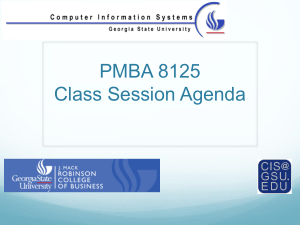Presentation Slides
advertisement
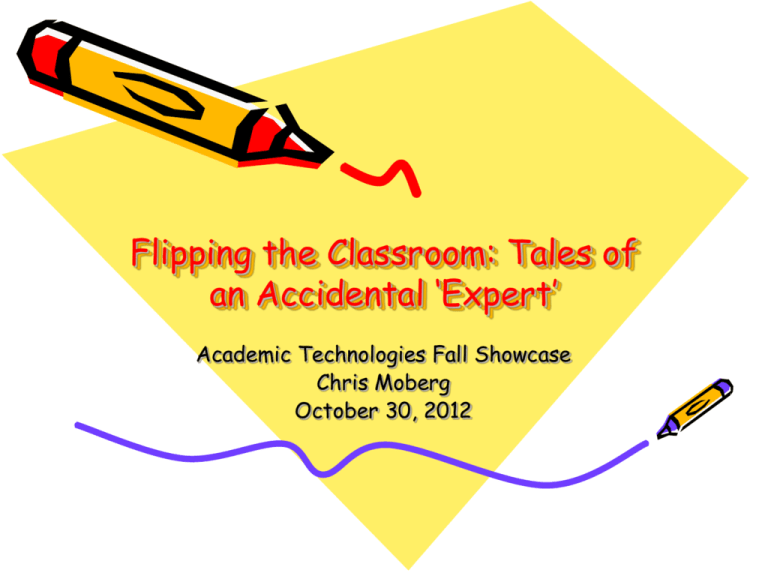
Flipping the Classroom: Tales of an Accidental ‘Expert’ Academic Technologies Fall Showcase Chris Moberg October 30, 2012 Agenda 1. 2. 3. 4. 5. 6. Preview What is a “Flipped Classroom?” Learning Theories Examples Benefits and Challenges Resources and Support Preview 1. I am not a teaching technology expert. 2. The Irony of Today’s Lecture. 3. My Personal Introduction to Flipping the Classroom – the Accidental Expert. What is a Flipped Classroom? • A flipped, or inverted, classroom simply means that a teacher moves the delivery of critical content (e.g. definitions, concepts, theories) outside the lecture hall. • In-person class time is mainly devoted to higher levels of learning – application, discussions, analysis, problem-solving. Impact of Technology • During the past decade, new technologies have helped transform distance education and professional graduate programs. • An important question is how to leverage these technologies at a residential, undergraduate focused university. Common Triggers • • • • Distance or Hybrid Program Opportunities Alleviate Workload Pressures Federal or State Education Initiatives New Technologies Enable Mobile and Convenient Content Delivery and Present Possibilities • Better Learning for Students? This is not a new concept I hear and I forget. I see and I remember. I do and I understand. (Confucious, 2010) Blooms Taxonomy of Learning Why Move Content Out? People Learn Better Source: Van Dam, Nick, “E-Learning by Design: Can a BetterDesigned Course Help You Learn More?” E-Learning, January 1, 2002. A True Win-Win Although there may be resource or program development pressures to move content out of the classroom, it is important to remember that student learning can improve if quality is achieved. Examples PMBA – Chris Moberg http://aspnet.cob.ohio.edu/mc/pmba_co_6/Class/CMBA604_Marketi ngStrategy/CMBA604_Moberg.html Dr. Brian Gibson – Auburn University http://www.operationsscmn.org/demo/ CSCMP Certification: http://designinglearning.net/preview/Learning%20Block%201%20Seg ment%202%20output/story.html Hybrid Course Format Source: Brian Gibson, Auburn University Potential Benefits For the student: 1. Improved Learning 2. Asynchronous Viewing 3. Ability to Review Lectures 4. Reduced Costs for Course Materials Potential Benefits For the faculty member: 1. Increased Class Time Devoted to Effective Learning Activities 2. Increased Consistency 3. Increased Student Engagement 4. Improved Course Evaluations 5. Use Across Courses and Programs Potential Benefits For the Program or College: 1. Better End Products; AoL 2. Student Recruiting 3. Resource & Workload Efficiencies 4. New Programs and Revenue Streams Challenges 1. Quality Matters * Solid Production Quality, Interactive, Parsimony 2. Need to Effectively Use Class Time – Gift of Time 3. Significant Up-Front Investment Activity Time Spent (each 30 min. episode) Detailed Outline 1 hour Search/Selection Videos, Materials 2 hours Powerpoint Development 4 hours Script Writing & Prep 2 hours Studio Time for Taping 2 hours Total: 11 hours per episode More Challenges 4. Stick to the Basics * Record lecture only on basic theories and concepts not likely to dramatically change * Avoid mention of time or time-sensitive examples 5. Faculty Outside Traditional Comfort Zone * Different pedagogy and Lecture Delivery * Use of newer technologies * Potential use of lectures from other faculty members 6. Ensuring Students are Prepared for Class 7. Access to Studios and Other Technologies Closing Thoughts 1. 2. 3. 4. 5. Eyes Wide Open – Capturing Lectures is Stressful and Time-Consuming After Up-Front Investment, Time and Effort Will Be Saved in Long Run. Components of Effective Teaching – Organization, Engagement, Clearly Stated Learning Objectives – Still Matter. Flexibility and Support from Departments, Colleges, and the University will Make a Difference. Take Baby Steps – Begin By Inverting a Few Sessions Resources and Support 1. Academic Technologies (at@ohio.edu) is located in the Faculty Commons. Mike Roy, Becky Simons and Candi Morris. 2. Emerging Technology Services (ets@ohio.edu) will be conducting a lecture capture pilot and an evaluation of web conferencing software in the near future. 3. Talk to Colleagues Around Campus that have developed online and hybrid courses (eg Business; Nursing etc.).


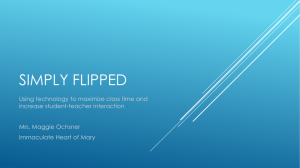
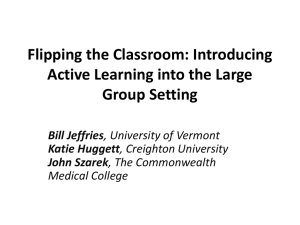
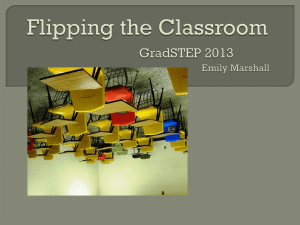
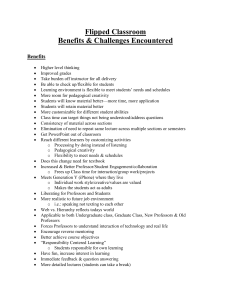

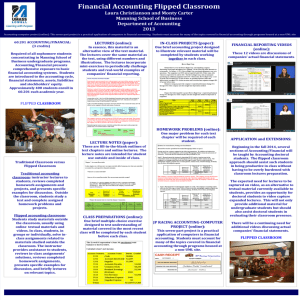
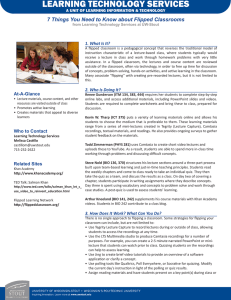
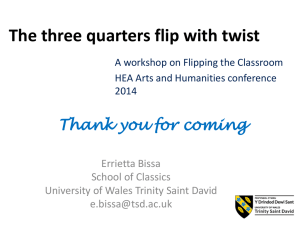
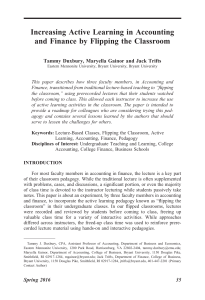
![EndNote X4 - [Inverted Classroom]](http://s3.studylib.net/store/data/009670792_1-1fc2e151915cca8163dedde0ff42216b-300x300.png)
